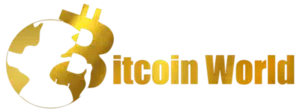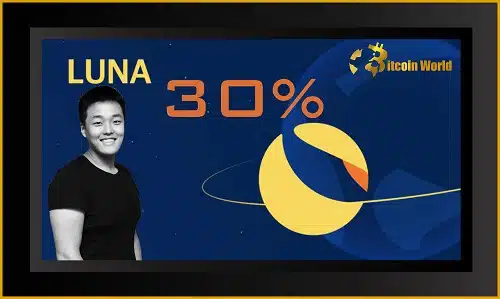The crypto world is still reeling from the dramatic collapse of the Terra ecosystem. But amidst the uncertainty, Terraform Labs is pushing forward with its plan to resurrect the network. In a recent update, they’ve tweaked their “Ecosystem Revival Plan 2” following community feedback, focusing on providing more immediate liquidity to smaller holders of pre-attack Anchor Protocol UST (aUST) and post-attack LUNA and UST.
What’s the Latest from Terra’s Revival Strategy?
Originally, the plan proposed a 15% initial token float – the portion of new tokens immediately tradable – for affected users. However, responding to community concerns, Terraform Labs CEO Do Kwon announced an increase to 30% for pre-attack aUST stakers and post-attack LUNA and UST holders. This update, rolled out around 10 a.m. Hong Kong time on Friday, aims to address liquidity issues and offer quicker access to funds for those most impacted by the Terra debacle.
Let’s break down the key changes in this updated plan:
- Increased Initial Token Float: Up from 15% to 30% for pre-attack aUST, post-attack LUNA, and UST holders. This means a larger chunk of tokens will be immediately available for trading upon the launch of the new Terra network.
- Focus on Small LUNA Holders: Wallets holding less than 10,000 LUNA before the attack are now prioritized. These smaller holders, representing over 99% of all LUNA wallets and approximately 6.45% of the pre-incident LUNA supply, will receive 30% of their new tokens upfront.
- Vesting Schedule for Remaining Tokens: The remaining 70% for these small LUNA holders will be subject to a two-year vesting period. This means the tokens will be released gradually over two years, with an initial six-month cliff – meaning no tokens are released for the first six months, followed by a gradual release over the subsequent 18 months.
- Reduced Post-Attack UST Distribution: The distribution for post-attack UST holders has been slightly reduced from 20% to 15%. The 5% difference has been reallocated to the community pool, intended for future ecosystem development and initiatives.
- Snapshot Warning: Terra has cautioned users that UST or LUNA bridged off the Terra network or held in less easily identifiable Terra protocols might not be included in the ownership snapshots. This highlights the importance of holding assets within the main Terra ecosystem for accurate tracking and distribution.
Who Benefits from the Updated Token Allocation?
The revised plan clearly aims to provide quicker relief to smaller holders. By increasing the initial unlock to 30% for wallets with less than 10,000 LUNA pre-attack, Terra is addressing concerns about immediate liquidity needs for a significant portion of its community. This adjustment attempts to balance the need for immediate access to funds with the long-term health and stability of the new Terra network through token vesting.
Here’s a quick comparison of the key changes:
| Category | Original Plan (Approximate) | Updated Plan |
|---|---|---|
| Initial Token Float (Pre-attack aUST, Post-attack LUNA/UST) | 15% | 30% |
| Initial Token Float (Pre-attack LUNA) | Varies by Holder Size | 30% for < 10,000 LUNA holders |
| Vesting for Remaining Tokens | Varies | 2-year vesting with 6-month cliff for small LUNA holders |
| Post-attack UST Distribution | 20% | 15% (5% to Community Pool) |
Community Reaction: Still Divided?
Despite these revisions, the online crypto community remains largely critical of Do Kwon’s proposal to launch a new blockchain. Many feel the focus should be on compensating those who suffered significant losses due to the UST de-pegging and LUNA crash, rather than creating a new chain. Concerns persist about trust and the long-term viability of any new Terra project spearheaded by the same leadership.
Comments across social media platforms and crypto forums reflect a mix of skepticism and frustration. While some appreciate the increased initial liquidity, many argue it’s insufficient to address the scale of the losses incurred. The debate continues to rage about the best path forward for the Terra community and the broader implications for decentralized finance (DeFi).
The Road Ahead for Terra and the Crypto Market
Terra’s situation serves as a stark reminder of the volatility and risks inherent in the cryptocurrency market. The collapse of UST and LUNA sent shockwaves through the entire crypto ecosystem, impacting numerous exchanges, traders, and investors. The ongoing efforts to revive Terra are being closely watched as a case study in crisis management and community rebuilding within the decentralized space.
As Terra navigates this complex path, several key questions remain:
- Will the new Terra blockchain gain traction and user adoption? The success of any new blockchain hinges on its ability to attract developers, projects, and users. Building trust after such a significant event will be a major challenge.
- Can Terra regain the confidence of the crypto community? Restoring faith is a long and arduous process. Transparency, consistent communication, and demonstrable progress will be crucial.
- What are the broader implications for stablecoins and algorithmic DeFi? The TerraUSD (UST) de-pegging has raised serious questions about the stability and sustainability of algorithmic stablecoins. Regulatory scrutiny and industry-wide discussions on risk management are likely to intensify.
The journey to recovery for Terra is far from over. The updated token distribution plan is a step in addressing immediate liquidity concerns, but the long-term success of any revival effort will depend on a multitude of factors, including community support, technological innovation, and the evolving regulatory landscape of the crypto world.
Stay tuned for further updates as the Terra saga unfolds and continues to shape the crypto market.
Related Posts – The Indian Finance Minister hails blockchain technology
Disclaimer: The information provided is not trading advice, Bitcoinworld.co.in holds no liability for any investments made based on the information provided on this page. We strongly recommend independent research and/or consultation with a qualified professional before making any investment decisions.


